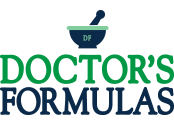Omega-3 Fatty Acids for the Management of Hypertriglyceridemia
A Science Advisory From the American Heart Association
Hypertriglyceridemia (triglycerides 200–499 mg/dL) is relatively common in the United States, whereas more severe triglyceride elevations (very high triglycerides, ≥500 mg/dL) are far less frequently observed.
Both are becoming increasingly prevalent in the United States and elsewhere, likely driven in large part by growing rates of obesity and diabetes mellitus.
In a 2002 American Heart Association scientific statement, the omega-3 fatty acids (n-3 FAs) eicosapentaenoic acid (EPA) and docosahexaenoic acid (DHA) were recommended (at a dose of 2–4 g/d) for reducing triglycerides in patients with elevated triglycerides.
Since 2002, prescription agents containing EPA+DHA or EPA alone have been approved by the US Food and Drug Administration for treating very high triglycerides; these agents are also widely used for hypertriglyceridemia.
The purpose of this advisory is to summarize the lipid and lipoprotein effects resulting from pharmacological doses of n-3 FAs (>3 g/d total EPA+DHA) on the basis of new scientific data and availability of n-3 FA agents. In treatment of very high triglycerides with 4 g/d, EPA+DHA agents reduce triglycerides by ≥30% with concurrent increases in low-density lipoprotein cholesterol, whereas EPA-only did not raise low-density lipoprotein cholesterol in very high triglycerides.
When used to treat hypertriglyceridemia, n-3 FAs with EPA+DHA or with EPA-only appear roughly comparable for triglyceride lowering and do not increase low-density lipoprotein cholesterol when used as monotherapy or in combination with a statin.
In the largest trials of 4 g/d prescription n-3 FA, non–high-density lipoprotein cholesterol and apolipoprotein B were modestly decreased, indicating reductions in total atherogenic lipoproteins.
The use of n-3 FA (4 g/d) for improving atherosclerotic cardiovascular disease risk in patients with hypertriglyceridemia is supported by a 25% reduction in major adverse cardiovascular events in REDUCE-IT (Reduction of Cardiovascular Events With EPA Intervention Trial), a randomized placebo-controlled trial of EPA-only in high-risk patients treated with a statin.
The results of a trial of 4 g/d prescription EPA+DHA in hypertriglyceridemia are anticipated in 2020. We conclude that prescription n-3 FAs (EPA+DHA or EPA-only) at a dose of 4 g/d (>3 g/d total EPA+DHA) are an effective and safe option for reducing triglycerides as monotherapy or as an adjunct to other lipid-lowering agents.
References / Story Source:
Omega-3 Fatty Acids for the Management of Hypertriglyceridemia: A Science Advisory from the American Heart Association. Originally published19 Aug 2019
https://doi.org/10.1161/CIR.0000000000000709Circulation 2019;140:e673–e691

